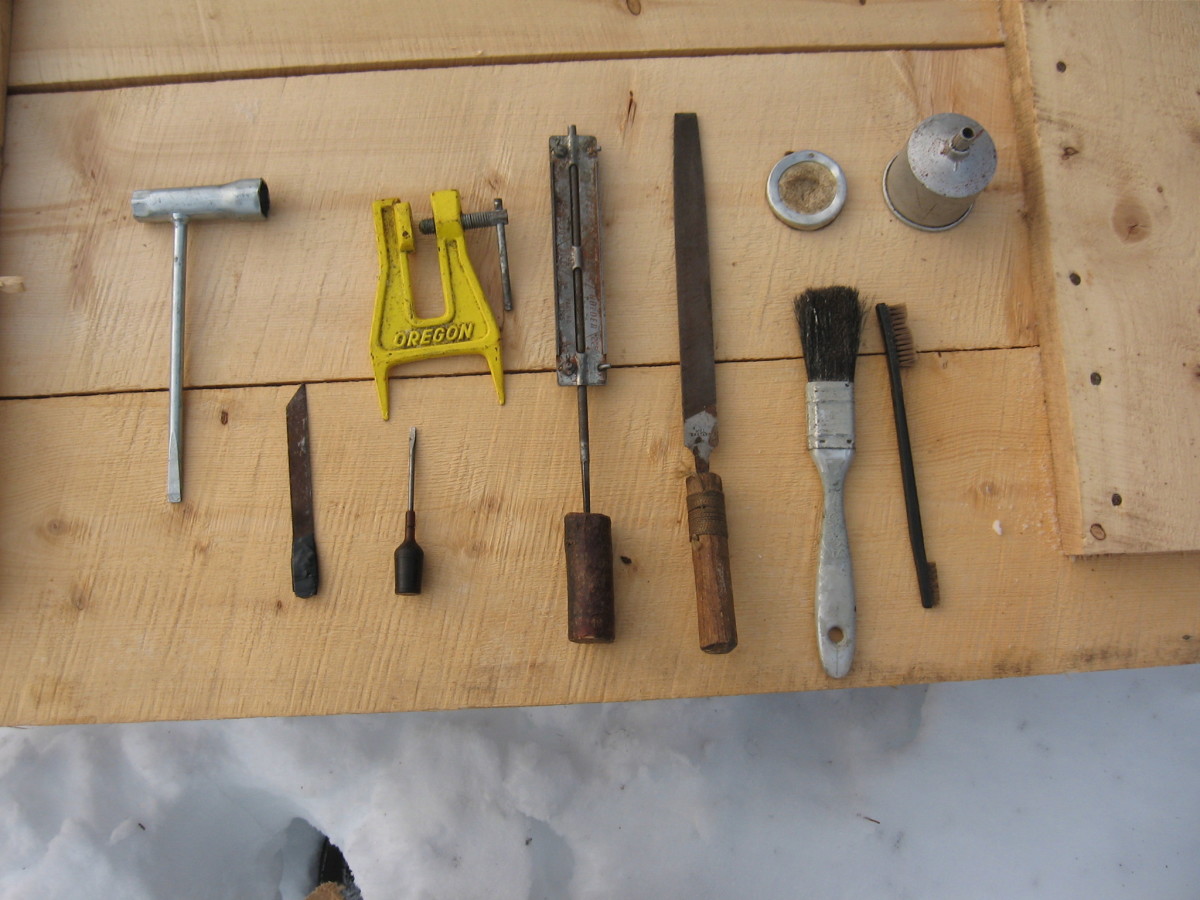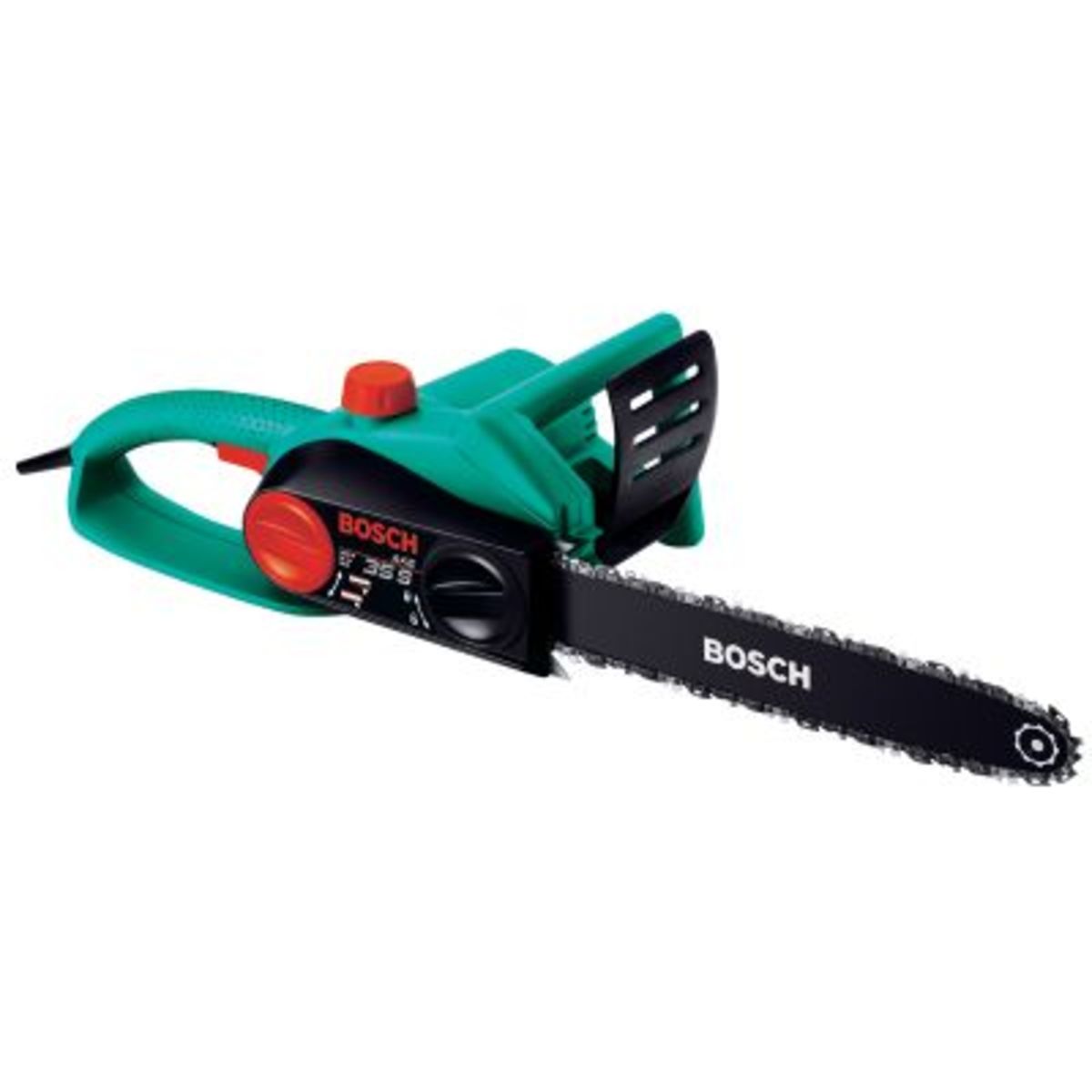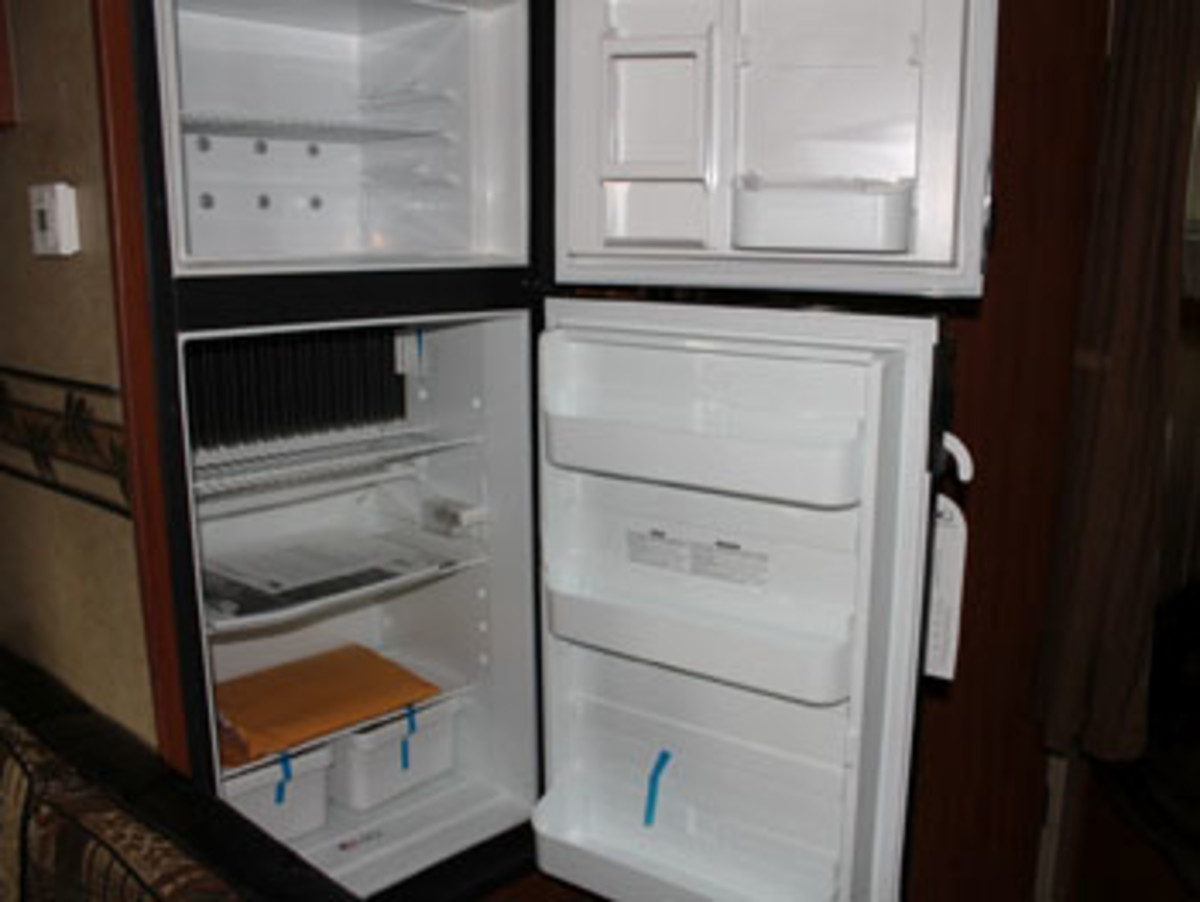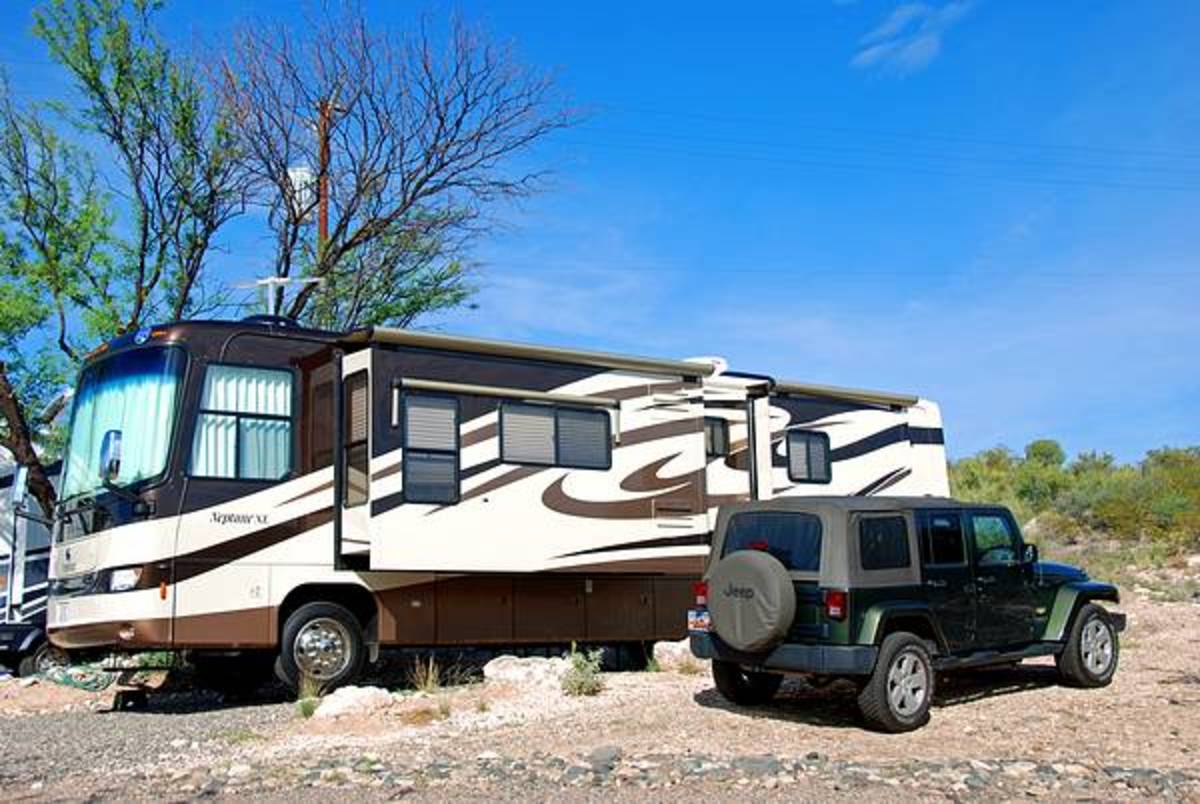How To Safely Operate A Chainsaw
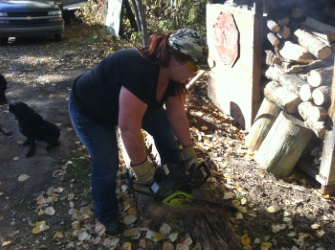
What Is A Chainsaw?
A chainsaw is an electrical or gasoline motor powered machine which propels a series of aggressive toothed links forming a chain at high speed in a grove around a guide bar. The number of teeth on the chain varies depending on the length of the chainsaw bar which can be anywhere from a 6 or 8 inches to many inches long. The depth of cut of the teeth is predetermined by the height of the rake portion of the tooth which follows behind the tooth and pulls or rakes the lose wood chips out of the grove. Chainsaws can cut through a huge amount of wood very quickly and can harm the operator badly if proper handling techniques are not strictly adhered to during operation. Protect yourself by gaining knowledge about safe chainsaw handling procedures.
Safe Operation Of A Chainsaw Tutorial
Chainsaw Safety
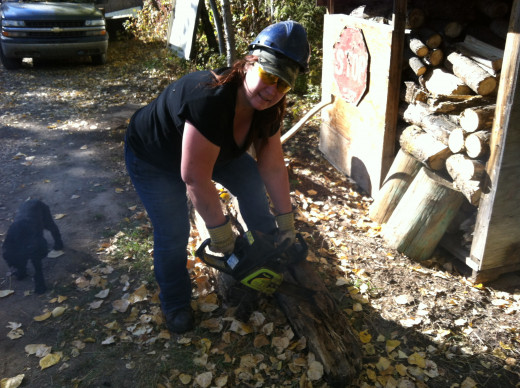
Gas And Oil
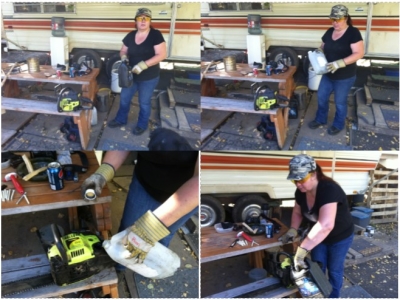
Step One: Learning about lubricants
If your chainsaw is not electric then it likely has a 2-cycle gasoline engine. With 2-stroke motors you have to add a few ounces of oil to the gas that your saw will be burning. The mixture of fuel and oil is the only method of lubricating the piston and cylinder wall inside the 2-cycle engine. For this reason getting the correct ratio of gas and oil is vital to your saw's engine lifespan. Different engine manufactures specify slightly different mixture ratios so read your documentation about the requirements for your chainsaw motor. Once you know the mixture ratio and type of 2-stroke oil specified for your saw you can get a one gallon container of gasoline and add the required ounces of oil to the gallon of gas. Shake the mixture well after you add the oil to the gas and again before each refill to make certain that the oil stays mixed evenly in the gas. Diligence in these practices will keep your saw's engine preforming better and prolong its life.
What Do You Think!
Should Women Operate Saws?
The other important lubricant necessary for your chainsaw's operation is chain and bar oil. Your gas powered chainsaw will have two filler caps located on its body somewhere. One cap will be for the gasoline tank and the other for the bar and chain oil tank. Again the saw's manufacture will specify a quality grade of chain oil that is preferred but you have some leniency in this area. The metal chain runs in a grove on the chainsaw's metal bar and the oil provides a gliding barrier between the two steel contacting surfaces. Use a grade of oil that offers a good protective barrier between two metal surfaces and your saw's components will have minimized ware. Whether your chainsaw has an automatic bar oiler or a manually operated thumb or finger trigger located by the throttle you need to ensure that the chain and bar receive a generous amount of oil. If your saw's bar and chain are oiled properly you will likely have to fill the bar oil tank every time you refill with gasoline.
Get A Book On Chainsaw Safety Here
Good Saw Performance
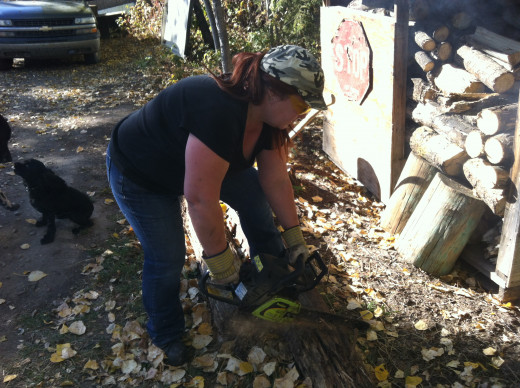
Chainsaw File
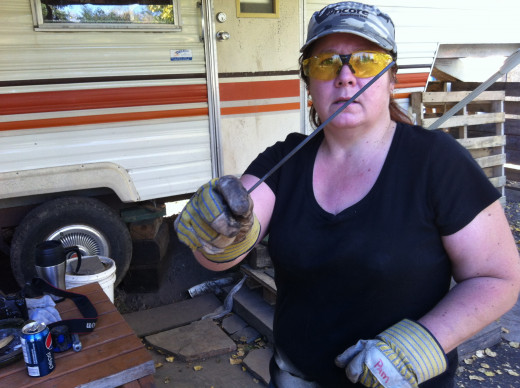
Proper Filing Technique
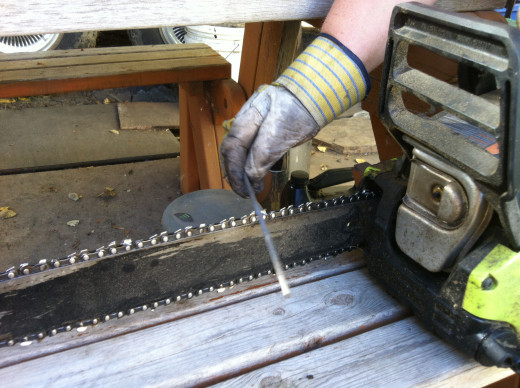
Step Two: Sharpening Your Saw
The chain on your chainsaw will have a standard tooth design which consists of a flat horizontal steel cutting surface with a 37 degree angle attached at its longest side to a vertical steel cutting knife rising off of the chain link. The vertical knife has a semicircle cut into it at a particular diameter and that area of the tooth is technically named the Gullet. Both the horizontal slide plate and its perpendicular gullet plate have cutting edges and require frequent re-sharpening. To perform this task there are power and hand jigs available but the job can be easily accomplished by the use of a single hand held round file guided with a few precision strokes.
Determine the correct size of your saw's chain tooth from the chains documentation and purchase an economical chainsaw chain file the right diameter. With that file in hand place it perpendicular to the tooth of the chain and slide the file through the gullet semicircle opening at the existing manufactured angle about 37 degrees. Once in the gullet of the tooth with the tip of the file gently push forward maintaining the factory angle and rotating the file clockwise between your thumb and forefinger as you lift slightly upward. The distance of the stroke should be the entire length of the file. Unless your chain has a badly damaged and disfigured tooth two or three precision strokes of the file on each tooth should be adequate to sharpen the saw's chain. Every other tooth on the chain is attached opposite to the tooth that precedes it - half are right hand and half are left hand. You will have to perfect your filing technique to repeat this sharpening procedure both from the left and the right. Remember practice makes perfect!
Save Money On Chain Bar Oil!
Your chainsaw chain will stretch over time from general use. Other causes of chain stretch are operating the saw with a dull chain or an insufficiently lubricated chain. When this happens the chain requires immediate tightening. For this purpose chainsaw manufactures have conveniently located two threaded studs with hex nuts on the side of the saw at the very start of the chain bar. Closely related to the studs in the front of the saw beside the chain bar there is a tightening screw which has a slot in the head for a flat head screw drive. To remove the excess slack in your saw's chain first loosen the two hex nut on the side of the chain bar and then turn the flat head of the tightening screw clockwise. With your thumb and forefinger pinch the chain and pull it up exposing the chain's metal guide from the bar's grove. By lifting upward with only a few pounds pressure you should be able to expose approximately 2/3 of the guide without removing it completely from the grove. After you achieve this tautness stop turning the tightening screw and re-tighten the two hex nuts.
Step Three: Starting Your Chainsaw
Now that your chainsaw is fueled, oiled,and sharpened you are ready to start the engine. If your saw is electric you just plug it in and turn the switch on but with the gas powered saw there are a few more step involved in the starting procedure. Some of the newer model chainsaws have a convenient primer pump located in close proximity to the ON switch. Usually it is a rubber button that you push with your thumb or forefinger three time to give the carburetor of the engine a good supply of fuel. If your machine does not have a primer button, it will at the least have a choke. With or without a primer pump you will want to pull the choke on when first starting the engine.
Chainsaw File Kit
Put the ON switch in the on position, pull the choke to the on position, put the chainsaw on the ground, put the toe of your foot through the back handle of the saw, and with your one hand on the front handle of the chainsaw holding it down begin to vigorously pull the recoil start rope. If the saw fires and dies, it likely has enough fuel so push the choke to the off position and pull on the start rope again. If your saw's engine is tuned properly it should start and continue running with two or three pulls of the start rope at this stage of the procedure. Once the engine is running make certain that the choke is completely off and squeeze the throttle reving the engine slightly for a few seconds. You will notice that the saw's chain is traveling around the bar at this point so be extremely cautious until you pull the chain brake on. All newer chainsaws have a chain brake handle usually located at the front of the saw's body just before the bar and chain and just proceeding the front handle grip. When you are not cutting with your running chainsaw the chain brake should be on keeping the chain from rotating around the bar. This safe operating practice will lessen the chances of accidental injury when the saw is being carried to the needed location.
SAVE on Gas and get an ELECTRIC Chainsaw!
After you get your chainsaw running and cut your wood check out how to chop your wood safely through this link!
- How To Chop Wood Safely
Chopping wood or splitting wood is a skill that people who participate in camping or picnicking should familiarize themselves with. It is a good idea to know how to chop wood safely with an axe.
An Alternative Starting Method
Sometimes putting your foot through the handle of the chainsaw and pulling on the start rope cab be an uncomfortable position. In such a case some people find that by kneeling down putting their knee on the top of the saw engine cover to secure the chainsaw and pulling on the recoil rope from that position to be more comfortable. The kneeling position changes the angle of the pull rope as you are pulling and also shortens the stroke that you pull this technique provides greater leverage by utilizing the shoulder muscles entirely rather than the turning of the waste muscles combined together with the shoulder muscles.
Chainsaw Starting

The Proper Stance
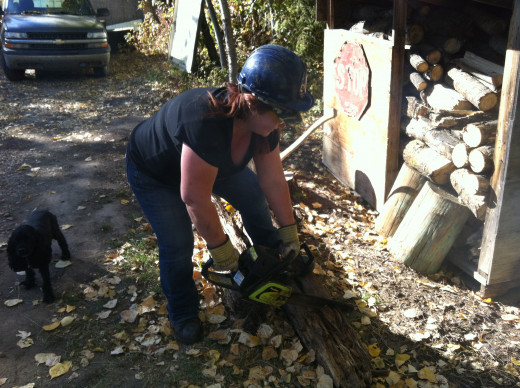
Final Step: Cutting Wood
After your chainsaw is running with the chain brake in the ON position carry the saw over to the wood that you will be cutting. Before you begin the cut you will want to release the chain brake and squeeze the engine throttle some to give the saw more power. Then standing to the side of the cut to be made and holding your chainsaw over the cut mark gently set the saw down onto the wood and squeeze the throttle more keeping the engine well powered. You should not have to apply downward force to your saw if it is sharp it will pull down into the wood on its own. As soon as the cut is complete when your chainsaw exits the finished cut release the engine throttle and re-apply the chain brake. When you are through all of your cutting turn the saw off.
Note: Even when all these precautions are adhered to incidents to the body still happen. Remember to always ware personal protective equipment when operating machinery that can harm you.
Personal Safety Gear
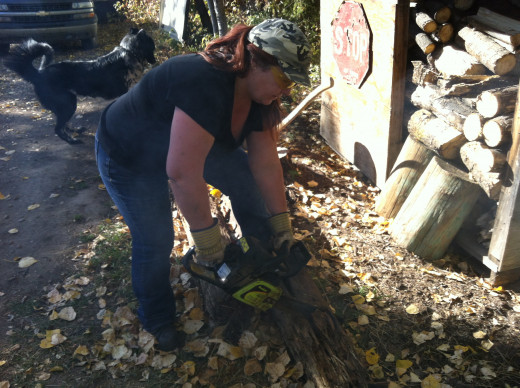
Questions or Comments?
I welcome all your questions and comments as well as any suggestions or ideas of your own. Please contact me through any of my links with any input that you desire to contribute. I enjoy hearing from everyone.
Thank you
How To Pam






